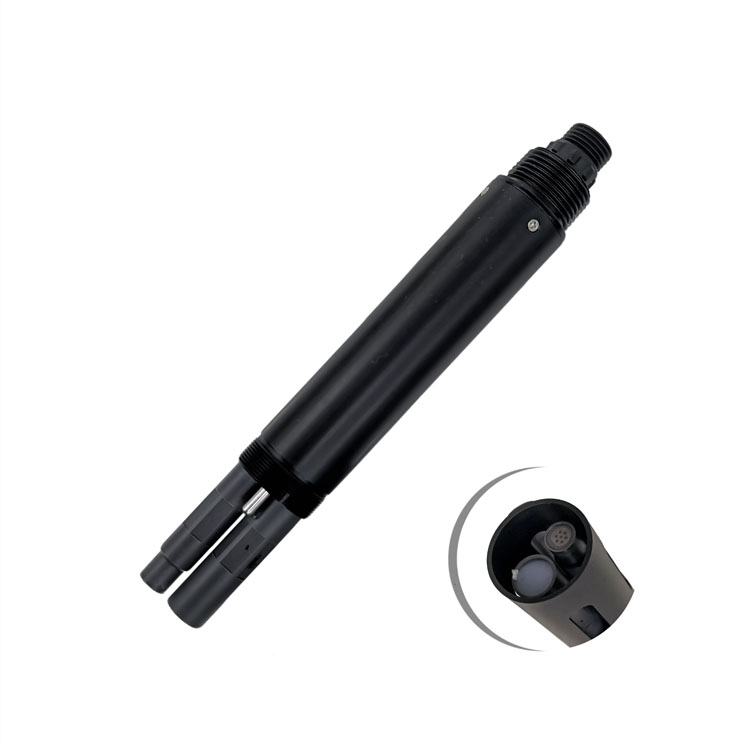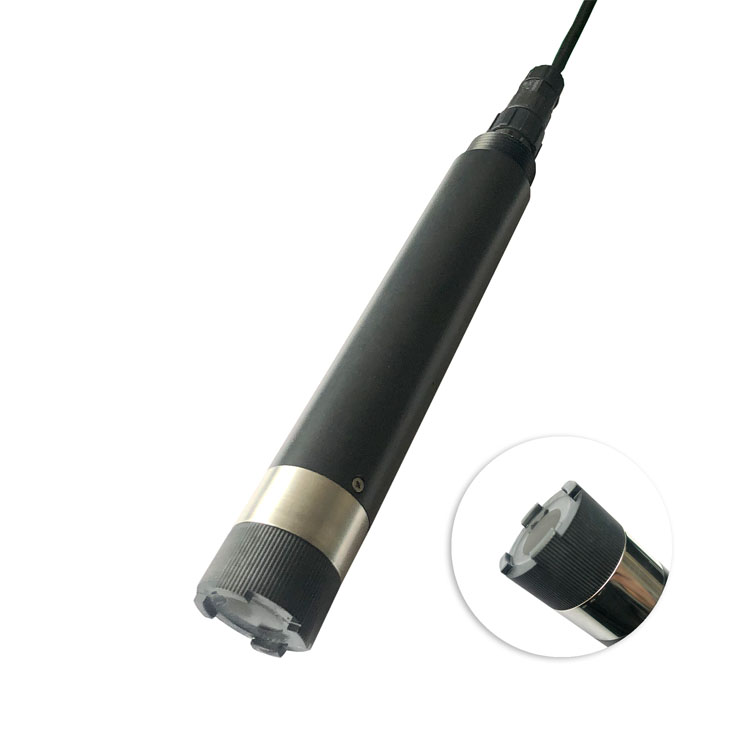

— Blogs —
—Products—
 Consumer hotline +8618073152920
Consumer hotline +8618073152920 WhatsApp:+8615367865107
Address:Room 102, District D, Houhu Industrial Park, Yuelu District, Changsha City, Hunan Province, China
Product knowledge
Time:2025-09-23 11:31:08 Popularity:379
Water quality monitoring is a critical tool for assessing water body health, identifying pollution sources, and guiding environmental management. The sampling process is the foundational step in water quality monitoring, directly impacting the accuracy and reliability of data. Quality control (QC) in the sampling process spans preparation, on-site operations, sample preservation, and transportation, involving aspects such as personnel, methods, locations, containers, and documentation. Scientific and standardized QC measures ensure sample representativeness and data reliability, providing a robust basis for environmental regulation, scientific research, and pollution control. This article elaborates on the key aspects of quality control in the water quality monitoring sampling process, covering personnel qualifications, sampling standards, on-site operations, sample management, and documentation requirements.
Quality control in water quality monitoring sampling aims to:
- Ensure Data Accuracy: Standardized procedures reduce sampling errors, ensuring samples reflect the true condition of the water body.
- Enhance Data Representativeness: Scientific selection of sampling points and frequency fully captures spatial and temporal water quality variations.
- Prevent Sample Contamination: Standardized container cleaning, fixative addition, and transportation processes minimize external interference.
- Support Regulation and Decision-Making: Reliable data supports pollution source tracking, emission regulation, and water environment management.
- Meet Regulatory Requirements: Compliance with national standards (e.g., Technical Specifications for Surface Water and Wastewater Monitoring, HJ 91.1-2019) ensures data legality.
The following are critical quality control measures for the water quality monitoring sampling process, covering standardized requirements across all stages:
- Requirements: Sampling personnel must undergo professional training, pass relevant exams, and hold certifications (e.g., environmental monitoring sampling certificate).
- Purpose: Ensure personnel are familiar with sampling standards and possess proper operational skills to minimize human errors.
- Implementation:
- Conduct regular training on sampling methods, instrument use, sample preservation, and safety protocols.
- Assessments cover theoretical knowledge and practical operations to ensure competency.
- Sampling must be led by certified personnel; non-professionals are not allowed to operate independently.
- Requirements:
- Sampling sections and points must comply with national or industry standards (e.g., HJ 91.1-2019) to ensure representativeness.
- Sampling containers must match the monitoring parameters (e.g., glass bottles for organic compounds, plastic bottles for routine parameters).
- Purpose: Ensure sampling points reflect the water body’s pollution characteristics and quality variations.
- Implementation:
- Section Selection: Based on monitoring objectives (e.g., drinking water protection, industrial wastewater regulation), select sections at key locations such as upstream and downstream of pollution sources, tributary confluences, or functional zones (e.g., drinking water sources).
- Sampling Point Layout: Avoid stagnant or backflow areas, choosing straight river sections with stable flow and flat riverbeds.
- Container Selection: Choose materials based on parameters (e.g., polyethylene bottles to avoid metal contamination, amber glass bottles to prevent photodegradation), ensuring containers are free of residual pollutants.
- Frequency and Timing: Determine sampling frequency based on water body type (e.g., rivers, lakes) and monitoring goals (e.g., eutrophication, fecal contamination), such as monthly for drinking water sources or weekly for heavily polluted river sections.
- Requirements: Collect detailed background information on the water body or polluting entity, including production status, process flows, wastewater sources, treatment capacity, facility operation, and anomalies.
- Purpose: Understand factors affecting water quality, identify potential pollution sources, and ensure data interpretability.
- Implementation:
- Information Recording: Document water volume, wastewater discharge points, treatment processes, and anomalies (e.g., temporary shutdowns, equipment failures).
- On-Site Observation: Check for sudden discharges, leaks, or other anomalies, and record water body characteristics (e.g., color, odor, floating matter).
- Communication and Verification: Confirm information accuracy with the polluting entity or water body management authority.

- Requirements:
- Collect at least 10% parallel samples per monitoring batch to verify sampling consistency.
- Include full-process blank samples (covering sampling to analysis) and transport blank samples (covering transport only) to detect external contamination.
- Purpose: Assess sampling repeatability and external contamination risks to ensure data reliability.
- Implementation:
- Parallel Samples: Collect two or more samples simultaneously at the same point, with relative deviations meeting technical standards (e.g., <10%).
- Full-Process Blank: Use high-purity water to simulate the entire sampling, preservation, and analysis process to check for contamination.
- Transport Blank: Place high-purity water in sampling containers and transport with samples to detect contamination during transport.
- Preservation Requirements: Parameters requiring fixation (e.g., pH, dissolved oxygen) must be analyzed within the valid preservation period (typically 24 hours).
- Requirements:
- Sampling devices and containers must be rinsed 2–3 times with sample water to remove residual contaminants.
- Add fixatives immediately based on monitoring parameters (e.g., sulfuric acid for ammonia nitrogen, nitric acid for heavy metals) and attach standard labels.
- Purpose: Prevent sample contamination and degradation, ensuring analysis reflects the water quality at the time of sampling.
- Implementation:
- Container Cleaning: Use deionized water or dilute acid for cleaning; for organic parameters (e.g., BOD, oils), use specialized solvents.
- Fixative Addition:
- Total bacterial count and coliforms: Avoid contamination and maintain low temperature (4°C) during transport.
- BOD: Add sulfuric acid or zinc sulfate to inhibit microbial activity.
- Residual chlorine: Add sodium thiosulfate to prevent chlorine volatilization.
- Organic compounds: Add acidic fixatives (e.g., sulfuric acid) to prevent degradation.
- Labeling Requirements: Use waterproof adhesive labels to record sample number, sampling time, location, monitoring parameters, and fixative type.

- Requirements:
- Samples must be delivered to the laboratory within the specified time, kept at low temperature (typically 4°C) and protected from light during transport.
- Sample handover requires signatures from both parties, documenting handover time and sample condition.
- Purpose: Prevent physical, chemical, or biological changes during transport to ensure accurate analysis results.
- Implementation:
- Preservation Conditions: Use insulated boxes with ice packs for low-temperature storage; use amber containers or light-proof packaging for light-sensitive parameters (e.g., organic compounds).
- Transportation Management: Develop transport plans to ensure samples are delivered within valid preservation periods (e.g., 24 hours for ammonia nitrogen, 48 hours for COD).
- Handover Documentation: Record sample quantity, condition, and handover time, with signatures from both parties to ensure traceability.
- Requirements:
- Complete detailed sampling records, including the polluting entity’s name, sample type, sampling purpose, date, number, location, time, monitoring parameters, fixatives, wastewater characteristics, flow rate, flow volume, and sampling personnel.
- Any omissions or non-compliance require immediate supplementation or resampling.
- Purpose: Ensure traceability of the sampling process and provide legally and scientifically valid data.
- Implementation:
- Record Content:
- Basic Information: Sampling entity, location, date, time, sample number.
- Water Quality Characteristics: Color, odor, floating matter, flow rate, flow volume.
- Operational Details: Sampling method, fixative type, container material, and personnel signatures.
- Record Management: Use standardized sampling record forms, archived electronically to ensure data integrity.
- Anomaly Handling: Address missing records or sampling anomalies by supplementing or resampling immediately to avoid invalid data.
- Standardized Guidelines: Adhere to standards such as Technical Specifications for Surface Water and Wastewater Monitoring (HJ 91.1-2019) and Guidance on Water Quality Sampling (HJ 494-2009) to ensure standardized processes.
- Instrument Calibration: Regularly calibrate sampling equipment (e.g., automatic samplers, flow meters) to ensure accuracy.
- Data Validation: Use parallel samples, blank samples, and laboratory QC data to verify sampling quality.
- Information Management: Leverage IoT and data management platforms for real-time recording and transmission of sampling data, improving efficiency and traceability.
- Challenges:
- Complex Water Bodies: High turbidity, tidal rivers, or complex pollution may affect sampling representativeness.
- Human Errors: Improper operations or incomplete documentation by personnel may lead to data inaccuracies.
- Transport Delays: Exceeding preservation time limits may cause parameter changes.
- Solutions:
- Enhance personnel training to improve professional skills.
- Optimize sampling point design and increase parallel sample proportions.
- Establish rapid transport channels to ensure timely delivery to laboratories.
- Intelligent Sampling: Use automatic samplers and drone-based sampling to improve efficiency and precision.
- IoT Integration: Enable real-time data transmission and remote monitoring via sensors and cloud platforms.
- Green Technologies: Develop reagent-free or low-pollution fixatives to reduce environmental impact.
- Big Data Analysis: Use AI to optimize sampling point selection and frequency design, enhancing data representativeness.
Quality control in the sampling process for water quality monitoring is critical to ensuring data accuracy and reliability. By standardizing personnel qualifications, sampling section selection, container management, sample preservation, transportation, and documentation, errors can be effectively minimized, ensuring the scientific validity and legal compliance of data. Adhering to national technical standards and integrating intelligent and information-based technologies will further enhance the efficiency and precision of quality control in water quality monitoring sampling, providing robust support for environmental protection, pollution control, and public health.
Related recommendations
Sensors & Weather Stations Catalog
Agriculture Sensors and Weather Stations Catalog-NiuBoL.pdf
Weather Stations Catalog-NiuBoL.pdf
Related products
 Combined air temperature and relative humidity sensor
Combined air temperature and relative humidity sensor Soil Moisture Temperature sensor for irrigation
Soil Moisture Temperature sensor for irrigation Soil pH sensor RS485 soil Testing instrument soil ph meter for agriculture
Soil pH sensor RS485 soil Testing instrument soil ph meter for agriculture Wind Speed sensor Output Modbus/RS485/Analog/0-5V/4-20mA
Wind Speed sensor Output Modbus/RS485/Analog/0-5V/4-20mA Tipping bucket rain gauge for weather monitoring auto rainfall sensor RS485/Outdoor/stainless steel
Tipping bucket rain gauge for weather monitoring auto rainfall sensor RS485/Outdoor/stainless steel Pyranometer Solar Radiation Sensor 4-20mA/RS485
Pyranometer Solar Radiation Sensor 4-20mA/RS485
Screenshot, WhatsApp to identify the QR code
WhatsApp number:+8615367865107
(Click on WhatsApp to copy and add friends)
